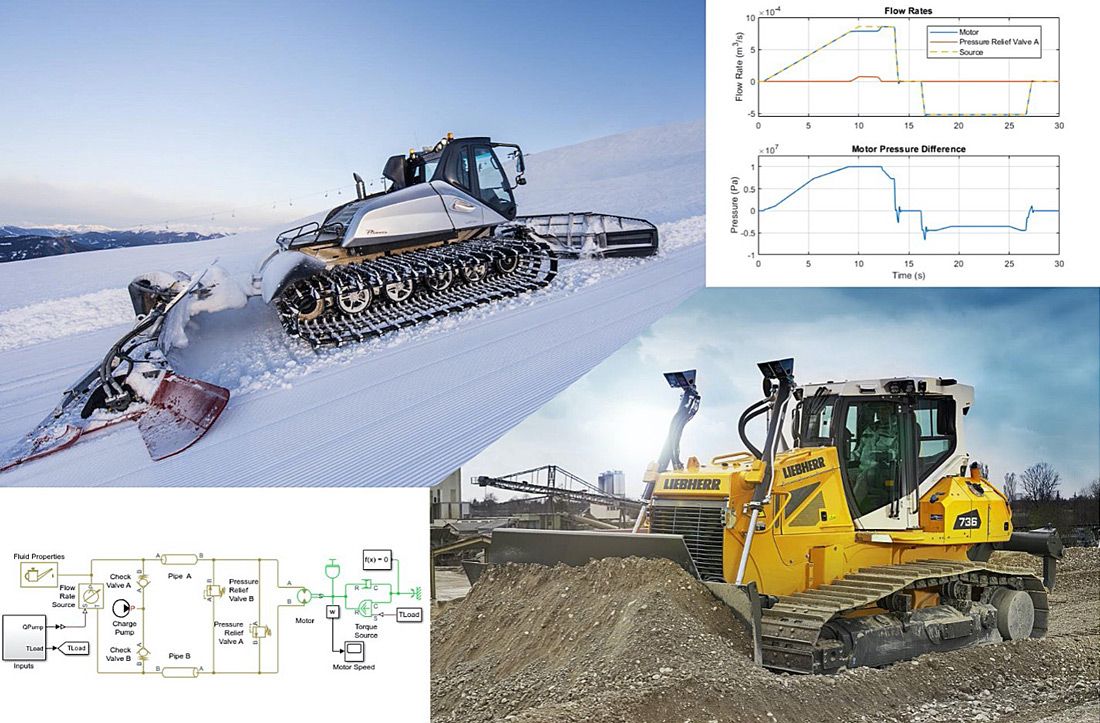MCI, Prinoth, and Liebherr Develop Digital Twins to Help Develop Tracked Vehicles
“The vehicles are modeled as accurately as possible using real-time simulations. This includes nonlinear effects in terrain interaction and flow problems in single valves. With this level of detail, relevant effects seen on real machines are adequately represented in their virtual counterparts.”
Key Outcomes
- Workflows at cooperating companies enhanced by incorporating digital twins
- MCI students gained real-world experience by completing bachelor’s and master’s projects at the DTL
- Developed models reused for designing and testing vehicle variants, as well as follow-up projects such as assisted operation, predictive maintenance, or full electrification
Based in Austria, the Digital Twin Lab (DTL) at the Management Center Innsbruck (MCI) supports companies in the field of machine simulation. MCI’s DTL has been cooperating with Prinoth, an Italian manufacturer of tracked vehicles, such as snow groomers, and German-Swiss manufacturing giant Liebherr for several years now.
Developing digital twins—real-time simulation models of tracked vehicles—down to the valve level requires expertise and effort often beyond the capabilities of a single company. For instance, the hydrostatic drives involved are extremely complex because of nonlinearities and internal feedback. DTL therefore supplies companies—like Prinoth and Liebherr—with the know-how, libraries, and support to help build digital twins. In turn, the lab benefits from new experience and field data.
Together with its cooperating companies, MCI’s DTL used MATLAB® drive train models and Simscape Multibody™ to build digital twins for multibody simulation and hardware-in-the-loop controller testing. Parameters not found in data sheets are determined through system identification. Recently, Prinoth designed and built an electrified version of a snow groomer and was able to determine important aspects such as range beforehand. Simpler models would not have enabled this innovation.
